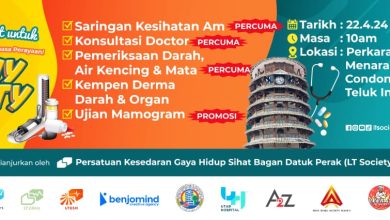By Dr Leow Aik Ming
A thread lift is a minimally invasive cosmetic procedure that effectively lifts the sagging skin on the face and neck using surgical suture threads. Presently, there are many types of threads available for facial and neck rejuvenation varying from their designs, tensile strength, materials used and bioavailability. The most common and widely used threads for thread lift are dissolvable barbed threads. These threads are embedded in the skin to promote fibrosis, thereby resulting in the formation of new collagen bundles. These newly formed collagen fibres act as scaffolding to hold the skin in position, thus making it firm in the process.
The thread lift is often used to improve the mid-lower face, nasolabial fold and jawline, creating subtle youthful changes rather than dramatic changes. A thread lift is not a substitute for a facelift. It helps to buy time before a face or neck lift is needed. The most significant advantage of a thread lift is the absence of visible scar or removal of tissue; hence, patients can resume their daily activities immediately after the procedure. It is common to combine thread lift with other non-invasive cosmetic procedures such as anti-wrinkle injections, laser treatments or chemical peels to improve skin texture.
Indications for thread lift:
- Patients who are in ’30-’40s of age, patients of ’50s or above are suitable if their skins are not too lax or redundant
- Patients who want subtle improvement and not expecting dramatic changes
- Patients who have premature ageing on the face and neck but not severe enough to warrant a face or neck lift
- Patients who do not want to spend too much time for recovery after the procedure
Postoperative expectations
There will be some level of discomfort, swelling and bruising around the treated area after the procedure. They will gradually subside. The effects of thread lifting are temporary because the visible enhancement immediately following the procedure is mostly due to inflammation and the resulting pooling of body fluids (oedema) around the threaded area. You can expect to go home within several hours of the procedure. Oral antibiotics and analgesics will be prescribed to reduce the risk of infection and postoperative pain, respectively. You can also expect to be back to normal activities within 2 to 3 days later.


Postoperative care
- Limiting speaking for the first 24 hours following the procedure to allow the skin to heal faster
- Avoid excessive chewing during the first 24 hours. Soft foods and liquids are advisable for 5-7 days after the procedure
- Oral analgesics are prescribed to reduce discomfort or pain
- Keep your head elevated during the first day to reduce swelling
- Occasionally compressive head or neck support is worn to facilitate healing and reduce swelling
- Resume light activities within a couple of days. After a week patient can get back to all normal activities
- Avoid facial massages for about three weeks


